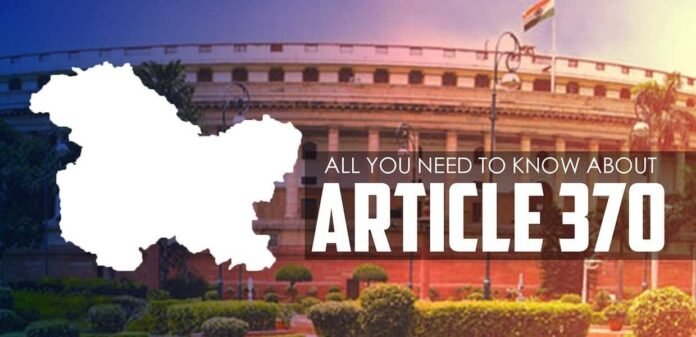Introduction
Article 370 of the Indian Constitution was a pivotal provision that granted special status to the region of Jammu and Kashmir, a region marked by its complex history and ongoing territorial disputes among India, Pakistan, and China since 1947. This article allowed Jammu and Kashmir a significant degree of autonomy, including the power to have its own constitution, state flag, and control over internal administration. However, the special status granted by Article 370 was abrogated on 5 August 2019, leading to profound changes in the political landscape of the region.
Historical Context and Significance of Article 370
Article 370 was introduced under Part XXI of the Indian Constitution, which dealt with “Temporary, Transitional and Special Provisions.” The article was intended to provide temporary autonomy to Jammu and Kashmir, with the state’s Constituent Assembly empowered to determine the extent of the Indian Constitution’s application to the state. The Assembly could also recommend the abrogation of Article 370, which would result in the full application of the Indian Constitution to Jammu and Kashmir.
In 1954, based on the recommendations of the Constituent Assembly of Jammu and Kashmir, the President of India issued an order that outlined the provisions of the Indian Constitution applicable to the state. However, since the state’s Constituent Assembly dissolved without abrogating Article 370, it was considered a permanent feature of the Indian Constitution.
The Abrogation of Article 370
On 5 August 2019, the Government of India took a historic step by issuing a Presidential Order that superseded the 1954 order, thereby extending all provisions of the Indian Constitution to Jammu and Kashmir. This move was backed by a resolution passed with a two-thirds majority in both houses of India’s Parliament. On the following day, a subsequent Presidential Order rendered all clauses of Article 370, except for clause 1, inoperative, effectively nullifying the special status of Jammu and Kashmir.
Alongside the abrogation, the Jammu and Kashmir Reorganisation Act, 2019, was passed by Parliament. This act bifurcated the state of Jammu and Kashmir into two separate Union Territories: the Union Territory of Jammu and Kashmir and the Union Territory of Ladakh. This reorganization took effect on 31 October 2019, marking a significant administrative change in the region.
Legal Challenges and Supreme Court Verdict
The abrogation of Article 370 sparked widespread debate and controversy, leading to a series of legal challenges. A total of 23 petitions were filed in the Supreme Court of India, questioning the constitutionality of the government’s actions. In response, a five-judge constitution bench was constituted to examine the matter.
On 11 December 2023, the Supreme Court delivered its verdict, unanimously upholding the constitutionality of the abrogation of Article 370. The judgment affirmed the government’s actions and validated the reorganization of Jammu and Kashmir, thereby closing a significant chapter in India’s constitutional and political history.
Conclusion
The abrogation of Article 370 represents a transformative moment in the history of Jammu and Kashmir. It has fundamentally altered the region’s relationship with the rest of India, bringing it fully under the purview of the Indian Constitution. While the decision remains a topic of intense debate, it has undeniably reshaped the future of Jammu and Kashmir, marking a new era in its governance and political status.


